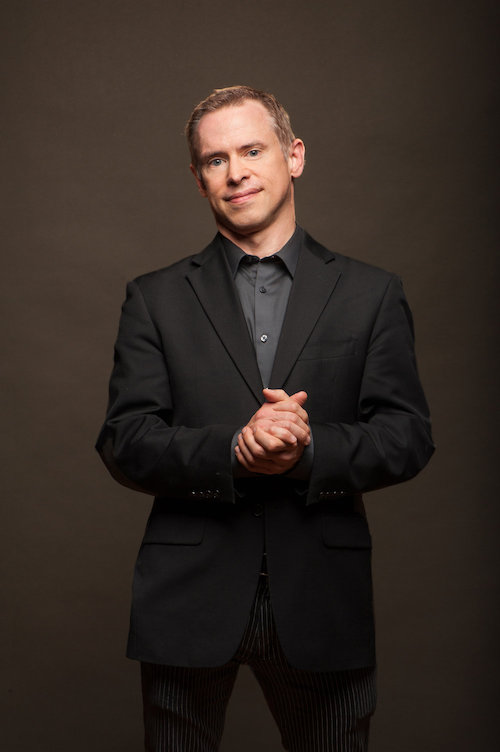Keyboard rarities highlight Burleson’s IKIF program

The theme of pianist Geoffrey Burleson’s Tuesday night recital, as he told the audience, was politics. Rather than escape from the immediate historical moment, Burleson wanted to engage it through music.
But the performance in Lang Recital Hall at Hunter College was part of the ongoing International Keyboard Institute Festival, and so the program was directed less to the conceptual or didactic and more toward the programmatic and, of course, the pianistic.
That meant the unfamiliar, the new, and the surprising. The music came from Liszt, Saint-Saëns (via Massenet and Gounod), Roy Harris, and contemporary composers Mary Kouyoumdjian, David Rakowski, and Marc Mellits.
Of the first three names, only Harris immediately stood out as political, and that less in the sense of a governing system than in the social basis of his aesthetic—he wanted to make classical music that was specifically American and thus could speak, without pandering, to the broad population. Burleson played Harris’ Op. 1 Sonata to open the second half, but first filled the opening portion of the concert with 19th century European music.
That meant Liszt’s Apparition No. 1 and the “Lyon” movement of Album d’un voyageur, and two concert paraphrases by Saint-Saëns using, respectively, “La Mort de Thaïs” from Massenet’s opera and Gallia by Gounod.
After a graceful performance of Liszt’s delicate, mystical Apparition, one heard the composer’s leanings through his pictorial “Lyon.” As Burleson pointed out in his program notes, Liszt was not a political composer, and “Lyon” is fundamentally an emotional reaction to the government’s violent suppression of a strike by Lyonnais textile workers. More passion than politics, it is a mix of sincerity and showmanship, full of fanfares and octave runs but without nuance—this is music that launched a thousand silent film accompaniments. The need to shout at the top of one’s lungs tripped up Burleson at times.
The shape of the Saint-Saëns set was similar, yet the results more sublime. The mysticism of the Thaïs paraphrase came like vapor out of the famous “Méditation,” leading to Gounod’s reaction to the destruction of the Franco-Prussian War.
The original, haunting choral work was transformed by Saint-Saëns into a somber, focused lamentation. Burleson had the right measure of this, channeling the emotions with a focus that gave them a richness and cutting edge that his Liszt lacked.
Harris’s sonata is both typical and atypical of the composer’s work. There are the rich, shining chords stacked one on another and the near-genteel formal devices. But where Harris’s music is typically organized around extended melodic lines, the sonata is more like a collage. It’s up to the musician to string everything together with phrasing and mood, and Burleson gave the music a powerful sense of modernity, earthy human feelings heard through a prism of disoriented psychology. This underrated work offers an eloquent experience in artistic thinking from between the World Wars.
Kouyoumdjian’s Aghavni (Doves), from 2009, came out of a related historical period, the Armenian genocide. According to Burleson’s program, the piece described the lives of a group of women undergoing that horrific experience. One was reminded of Adorno’s thoughts on poetry after Auschwitz—that standard language is incapable of capturing and expressing the depths of human depravity.
It’s to the composer’s credit that the three-movement work is not only effective but absolutely beautiful.
Played with deep sympathy by Burleson, the music mixes folk-like melodies with modern harmonic structures. This is what Bartók did, but Kouyoumdjian’s voice is all her own, with a surface gentleness that disguises an iron fist of craft and feeling. Her Aghavni impressed the listener more deeply than anything else on the concert.
Rakowski’s Riccio (Prelude #43) and Ain’t Got No Right, For Left-Hand Solo (Etude #67), and Mellits’ Etude No. 2, “Defensive Chili,” were as good-natured as the titles implied, and even more demanding as “Lyon.” Each was a study in pianistic prestidigitation, and Burleson’s strong, precise left-hand in Etude #67 and his coordination of the mind-boggling syncopations of Mellit’s Etude were exciting and great fun.
Best of all was the pianist’s encore, his own Tatum-esque study on Wayne Shorter’s classic jazz composition, “Footprints.” Burleson took the haunting bass line and harmonies and turned them into an unusual fast ballad, and his jazz phrases were just right.
The International Keyboard Institute and Festival continues through Sunday. Yinuo Wang and Martin Garcia Gracia play Wednesday at Lang Recital Hall, starting at 6 p.m. ikif.org


